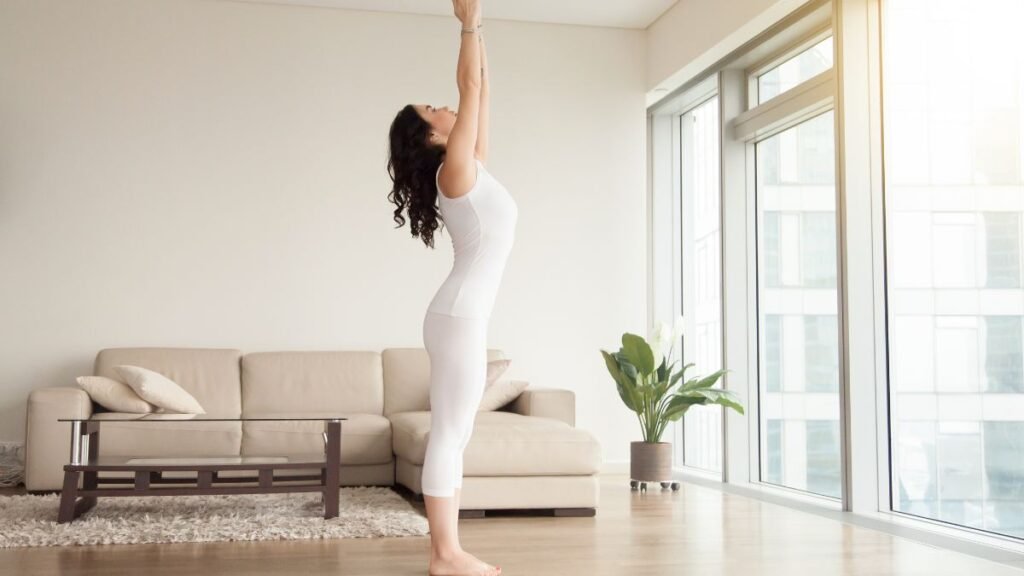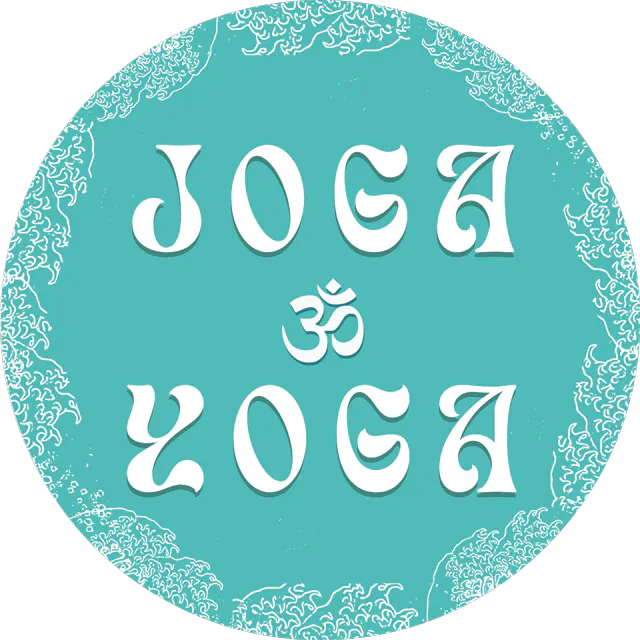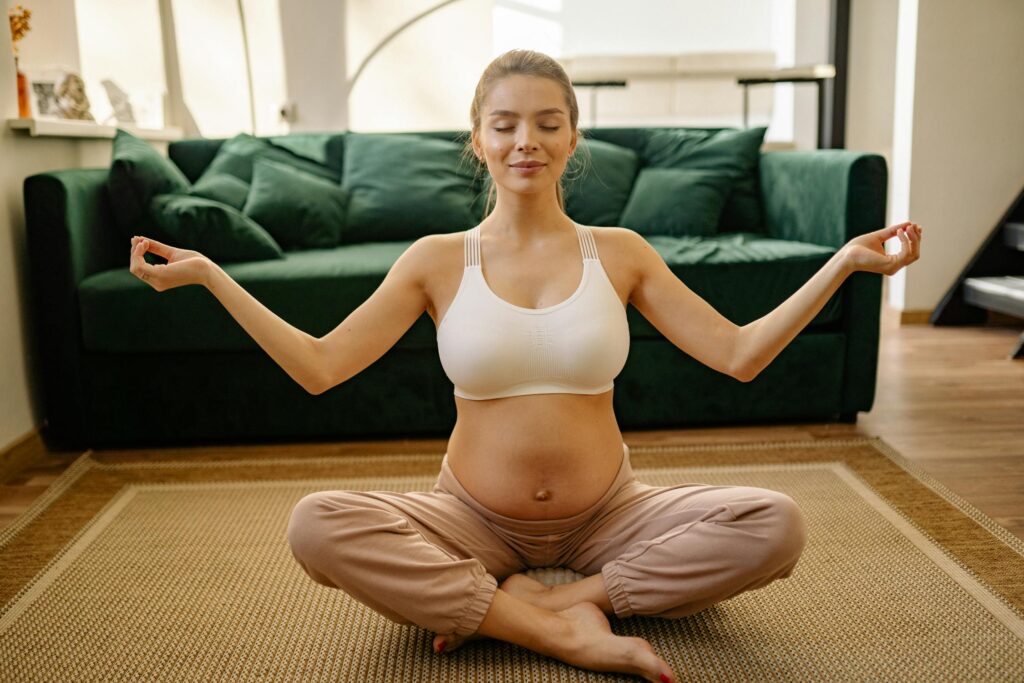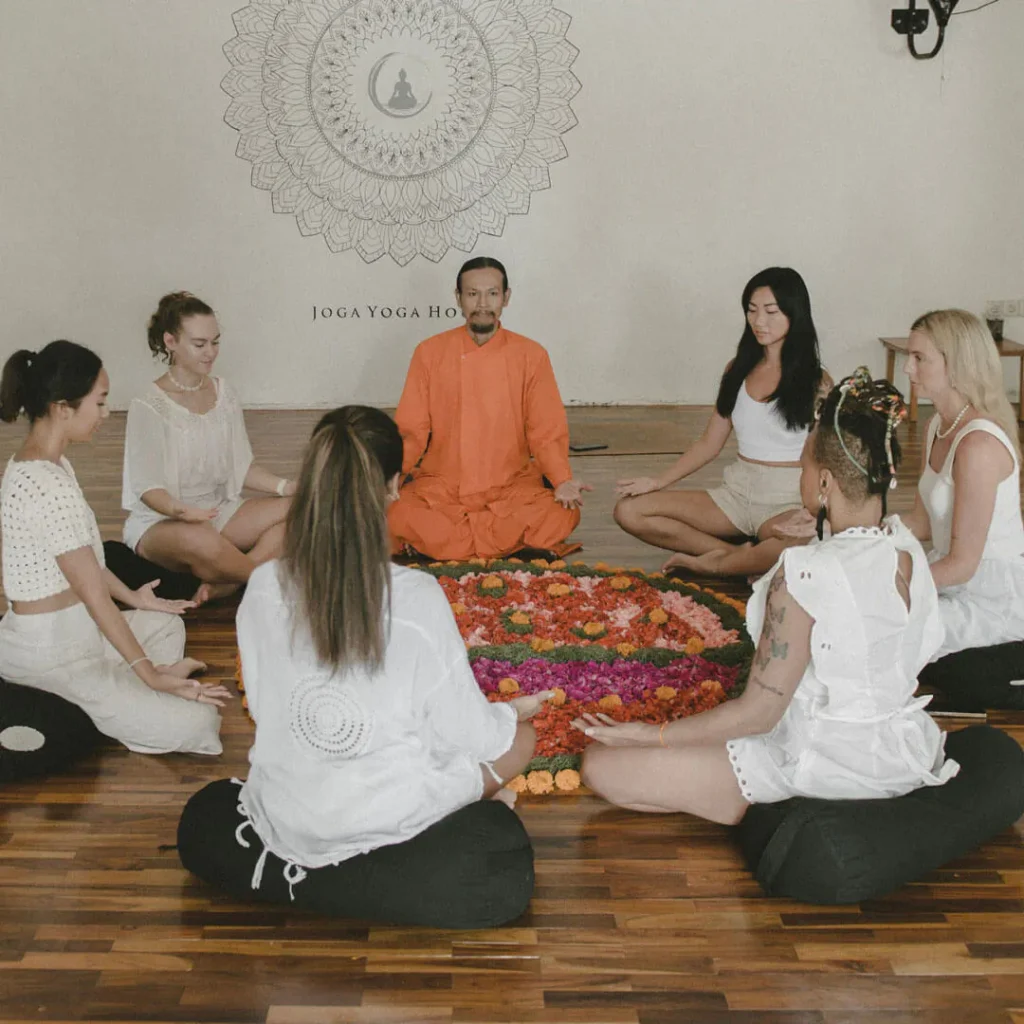The Modern-Day Back Struggle
Why does your back hurt even if you’re not lifting heavy stuff?
Most of us aren’t construction workers or athletes, yet back pain has become a modern epidemic. The real culprit? Our daily habits — hours at a desk, slouching into our chairs, and constantly looking down at our phones.
This lifestyle quietly reshapes the body. Shoulders round forward, the neck juts out, and the spine loses its natural curves. Over time, muscles tighten where they should stretch and weaken where they should support. The result is stiffness, fatigue, and chronic discomfort — especially in the lower back and between the shoulder blades.
Yoga offers a natural solution.
Rather than just masking the pain, yoga retrains the body. Through conscious movement, breath, and alignment-based poses, you can restore your spine’s integrity, awaken dormant muscles, and reduce pain at its root.
Practice the tips in this guide daily — or learn them more deeply during our immersive Yoga Teacher Training in Bali where alignment and anatomy are central to every practice.

Why Poor Posture Causes Back Pain
Poor posture doesn’t just look bad — it creates muscular imbalances and stress across the spine. Here’s what’s happening under the surface:
- Imbalanced muscles = tension and compression
Some muscles become overworked and tight, while others become weak and inactive. This pulls your posture out of alignment. - Rounded shoulders = tight chest and weak upper back
This creates upper back strain and reduces your breathing capacity. - Anterior pelvic tilt = pressure on the lower spine
When the hips tilt forward, it increases the curve of your lower back (lumbar lordosis), causing pain or tightness. - Forward head posture = strain on the neck and shoulders
For every inch the head shifts forward, your neck takes on up to 10 pounds of extra strain.
These imbalances don’t fix themselves. But with targeted yoga poses, awareness, and consistency, you can retrain your posture and give your spine the support it craves.
Top Yoga Poses for Posture and Back Pain
The following yoga poses are simple, effective, and beginner-friendly. Practice them regularly to bring your spine back into alignment and reduce tension.
- ✅ Tadasana (Mountain Pose)
Builds body awareness and teaches you how to stand tall with proper spinal alignment. - ✅ Bhujangasana (Cobra Pose)
Strengthens the muscles along your spine, opens the chest, and counters slouching. - ✅ Adho Mukha Svanasana (Downward-Facing Dog)
Lengthens the spine, stretches the hamstrings, and decompresses the lower back. - ✅ Setu Bandhasana (Bridge Pose)
Activates the glutes, opens tight hip flexors, and supports a neutral pelvis. - ✅ Balasana (Child’s Pose)
A gentle way to relax the back and invite natural spinal curvature.
You’ll find each of these poses—along with more advanced variations—in our Guide to Asana: Beginner to Advanced, which breaks down alignment, breath, and safe movement step by step.

Daily Habits That Support Postural Yoga
Yoga can transform your posture, but what you do the other 23 hours of the day matters just as much. These small habit shifts can reinforce the work you do on the mat and protect your spine all day long:
- Sit at the edge of your seat
Instead of leaning into the backrest, sit forward with your feet flat and spine lifted. This activates your core and stacks your posture. - Stretch your arms and spine every hour
Especially if you work at a desk. Raise your arms overhead, twist gently, or do a standing forward fold to counter static compression. - Lift your phone to eye level
Looking down = text neck. Holding your screen higher helps align your cervical spine. - Sleep on your back or side with a pillow between or under your knees
This maintains a neutral spine and prevents overnight stiffness. - Walk barefoot when you can
Barefoot walking strengthens foot arches and improves posture from the ground up. Even five minutes a day on natural surfaces makes a difference.
These small shifts help create body awareness throughout your day — not just during practice.
Breath and Core: The Missing Link
You can’t fix your posture without fixing your breath. Breathing is what stabilizes your spine from the inside out.
When we breathe into the chest only, the shoulders tense and the spine loses its natural rhythm. But diaphragmatic breathing — expanding the breath into the belly and ribs — engages the transverse abdominis, the deep core stabilizer that supports the low back.
Better breath = better core = better posture.
Try this: Sit tall, breathe slowly through your nose, and let your ribs expand out and down. Feel your pelvic floor and lower belly gently activate. That’s your postural engine turning on.
To deepen your awareness, integrate breathwork techniques like Nadi Shodhana or Ujjayi, which train you to align breath with movement and attention. These are core elements in our Mastering Pranayama Techniques module during teacher training.
Is Yoga Safe for Lower Back Pain?
If you’re practicing yoga to relieve back pain, safety and alignment are everything. Here’s how to avoid common mistakes and get the most from your sessions:
- Start slow, go deep later
Focus on subtle alignment and breath before chasing deeper flexibility. - Use props generously
Blocks, straps, bolsters, and even a folded blanket can make postures safer and more accessible. - Avoid jerky movements or sudden transitions
Move mindfully. The spine loves slow, smooth motion — not momentum. - Respect your limits
If something feels sharp, electric, or pinching, stop. Back off and try a gentler variation. - Think in layers: alignment → activation → breath
Get into position, engage the right muscles, then layer breath on top. That’s how healing happens.
Even experienced yogis benefit from revisiting these fundamentals regularly. If you’re unsure whether your practice is helping or harming, work with a trained teacher who can guide you into proper alignment and safe modifications.
Desk Yoga Sequence
Back pain often starts at the desk — so why not fix it right there?
Here’s a simple, effective desk yoga sequence you can do in under five minutes. It’s designed to release spinal tension, improve posture, and reset your energy in the middle of a long workday.
Tip: Do this flow once mid-morning and once in the afternoon. Pair it with a few slow, mindful breaths to reset your nervous system too.
You could also offer this as a downloadable PDF or part of your student resources. Let me know if you want me to generate a visual one-pager.
Learn Proper Alignment with Expert Guidance
Fixing your posture isn’t just about doing the right poses — it’s about doing them correctly. The difference between relief and more strain often comes down to subtle details: shoulder rotation, hip stacking, spinal curvature, and breath pattern.
That’s why hands-on help and anatomical awareness are so important.
At Joga Yoga, we focus heavily on functional alignment — not the “perfect” pose, but the right pose for your body. You’ll learn to:
- Understand the anatomical structures behind good posture
- Recognize and correct postural habits in yourself and others
- Use props and modifications to make poses safer and more effective
- Practice adjustments and cueing in real-life teaching scenarios
Whether you’re dealing with back pain or training to help others overcome it, our Yoga Teacher Training Programs equip you with the depth, confidence, and practical skills to bring posture into alignment — on and off the mat.

Can yoga help correct posture?
Yes, yoga is one of the most effective ways to correct poor posture.
By strengthening postural muscles, increasing spinal flexibility, and improving body awareness, yoga retrains your body to sit and stand upright naturally. Specific poses like Tadasana, Cobra, and Bridge help realign your spine and reverse the effects of slouching.
What are the best yoga poses for back pain and posture?
The best yoga poses for back pain and posture include:
Tadasana (Mountain Pose) – for body awareness and alignment
Bhujangasana (Cobra Pose) – strengthens the back and opens the chest
Adho Mukha Svanasana (Downward Dog) – stretches the spine and legs
Setu Bandhasana (Bridge Pose) – activates the glutes and opens hip flexors
Balasana (Child’s Pose) – gently decompresses the spine
These postures help balance muscle groups and relieve tension in the upper and lower back.
How often should I do yoga to improve posture?
Practicing yoga 3 to 5 times per week is ideal for improving posture.
You’ll start noticing better spinal alignment, reduced tension, and more body awareness within 2 to 4 weeks of consistent practice. Even short daily sessions, combined with mindful habits, can lead to lasting postural change.
Is yoga safe for lower back pain or herniated discs?
Yoga can be safe for lower back pain if done with proper technique and guidance.
Avoid deep forward bends and twisting under pressure. Use props like blocks and bolsters to support your spine, and focus on gentle, alignment-based poses. Always consult with a teacher or therapist if you have serious conditions like herniated discs.
How does breathing improve posture in yoga?
Breathing improves posture by activating your deep core and stabilizing the spine.
Diaphragmatic breathing engages the transverse abdominis and pelvic floor, which support upright posture from within. Breath-focused techniques like Nadi Shodhana and Ujjayi enhance alignment, calm the nervous system, and promote full-body awareness.






